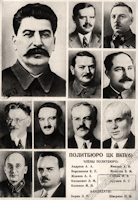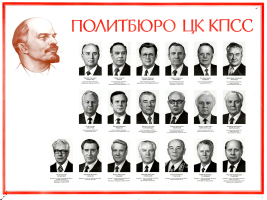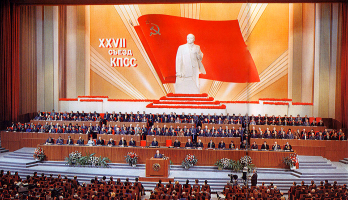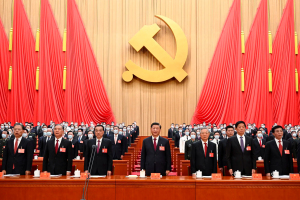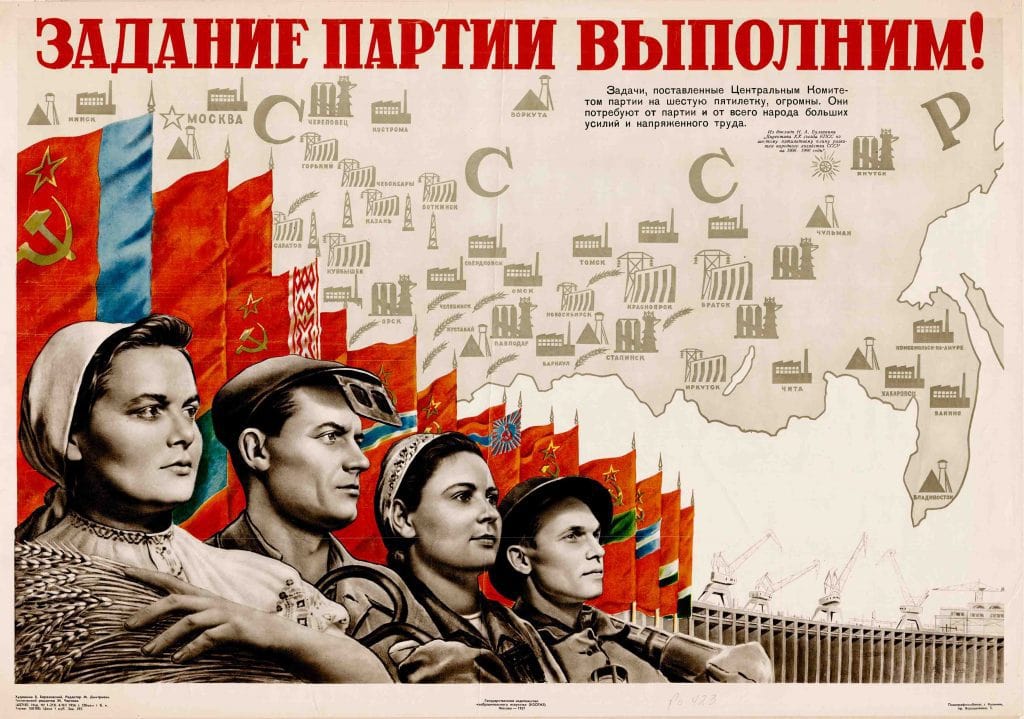|
The Political Economy of I. Why Study Central Planning?A. It continues to be the predominant economic system in some countries, such as North Korea and Turkmenistan.B. It continues to coordinate a substantial part of the economy in China.C. Ruslan Grinberg (see assigned reading), the Scientific Director of the Institute of Economics of the Russian Academy of Sciences, suggests that Russia should revive some aspects of central planning, but he believes that the plan targets should be indicative rather than mandatory.D. Historical significance for one-third of world population.E. Example of broader class of command economies in Egypt, Mesopotamia, Middle America, Nazi Germany.F. Background of market transitions in Central Eurasia and ChinaII. OwnershipA. Dominance of state ownership for productive resources, lesser role of collectives, cooperatives, and private ownership.B. Individuals could own personal items, a house (but not the land beneath it), and savings.
III. Political and Economic Institutions
- three branches, but not equal
|
| Sources | Uses |
| Production Imports Initial Stocks TOTAL |
Productive Uses Exports Personal Consumption Ending Stocks TOTAL |
e. In practice, many targets derived from the achieved level—a markup over this year's production.
f. Approval - By Supreme Soviet to give the plan force of law.
2. Implementation of Inconsistent Production Plans
a. Storming - Enterprises typically waited until last days of plan period to meet production quotas.
b. Tolkachy - Agents who located supplies of raw materials and arrange unplanned transactions.
c. Vertical Integration -
Self-supply. Reduced efficiency because it encouraged
small scale production and discourages specialization.
C. Investment Planning
1. Political Priorities - Determine the structure of output, and the structure of output determines the required structure of capital stock.
2. Economic Criteria - Used to choose technology after decision to invest is final.
D. Agricultural Organization and Planning
1. Kolkhoz - Collective farm, supposedly owned and managed by members, but members had few ownership rights. Impoverished before 1958 by low prices of compulsory deliveries.
2. Sovkhoz - State farm, organized like an industrial enterprise. Huge acreage. Management was appointed by the government and workers were paid by a wage and bonus system.
3. Private Plots - Gardens assigned to agricultural or industrial workers. Output could be sold at market prices. Denounced by Stalin, but supported by Gorbachev. Controlled 3 percent of the land, but produced 29 percent of output. Explained in part by stronger incentives and also because they produce high priced goods.
E. Foreign Trade Organization and Planning
1. State Trading - Under traditional Soviet system, exports are sold to FTOs under the Ministry of Foreign Trade at domestic prices, and sold overseas at international prices. Price differences cause losses and profits for FTOs, which are canceled by governmental taxes and subsidies.
2. Weaknesses of Planned Foreign Trade
a. Unpredictable - Foreign conditions change rapidly; cannot be planned; requires flexible and decentralized management. Long-term trade agreements, designed to stabilize trade with socialist countries, were often broken.
b. Product Choice - Impossible to make rational import and export decisions based on controlled prices and exchange rates.
c. Incentives - Quantitative output orientation discourages production of high-quality goods that can be sold overseas.
IV. Finance, Incentives, and Prices
A. Finance system played secondary role in economy based on physical output targets. Profit-oriented planning could conflict with political priorities.
B. Control by the ruble—surveillance of enterprises by the unitary State Bank to monitor and enforce plan fulfillment.
C. Financial Planning
1. Household Sector - Planned value of consumer goods provided to the population must be roughly equal to planned disposable income, adjusted for saving.
2. Business Sector - Enterprises receive sufficient income to cover payroll and cost of production. Failing business are subsidized and successful ones are highly taxed.
3. International Sector - Reflected in the balance of payments.
4. Balance of the Government - Planned in the state budget. Business profit was the largest revenue source and business subsidies were the largest expenditure source.
D. The Incentive System
1. Coercive and moral incentives were used extensively, but relative importance of material incentives grew through the years.
2. Wages and Salaries - About 70% if income. Higher authorities determined the number of workers and the average wage that an enterprise could hire and pay.
3. Bonus Income—about 30% of income.
a. Payment - Depended on plan fulfillment. If plans were overfulfilled, bonuses increased slightly.
b. During Planning - Bonus system caused managers to misrepresent input needs and production capacity and bargain for easy targets.
c. During Plan Fulfillment - Managers avoided overfulfilling targets (to avoid higher targets in future). Also, system encouraged management to hoard labor, equipment and resources, engage in small-scale production, and sacrifice quality for quantity. Discouraged technological innovation, which was poorly rewarded, interrupted production schedules, and required new sources of materials.
E. The Price System
1. Prices set by State Price Committee, changed infrequently.
2. Prices interacted with managerial incentives through value-based plan targets and financial balances.
3. Wholesale price = average (not marginal) industry-wide unit cost plus small profit markup related to capital intensity.
a. Enterprises with above-average costs immediately ran losses, requiring state subsidies.
b. Provided little incentive for enterprises to respond to consumer demand.
c. Poor guides for investment and foreign trade decisions.
4. Retail prices - Initially set to equate quantity demanded with quantity supplied (as controlled by planners), with adjustments to redistribute purchasing power from the rich to the poor.
5. System-wide problems:
a. Shortages, long lines, black-market activities, encouraging corruption and dilution of work incentives.
b. Budgetary problem when many wholesale prices exceeded retail prices.
V. The Second Economy
A. Unplanned production and exchange.
B. Partly legal, but, even after 1987, Soviet Union forbade:
1. employment outside family
2. production of fur hats, jewelry, weapons, and copiers
3. operation of amusement rides or games;
4. teaching courses not offered in public schools and colleges
5. organization of entertainment activities.
C. Some illegal activities were massive, requiring bribes and corruption.
D. System provided benefits and costs, and represented between 10 percent and 20 percent of GNP. Lingering effects on entrepreneurial skill and legal culture.
VI. Performance of the Central Planning System
A. Plan Fulfillment and Economic Growth
1. No clear evidence of accelerated long-term growth, compared to the pre-Soviet era (1885-1913).
2. Bergson found that four socialist countries utilized resources 25-34% less efficiently than capitalist competitors.
4. Western estimates suggest that none of the Soviet medium-term national income plans were fulfilled, that average growth rate between 1929 and 1990 was little more than half the planned average, and that shortfalls were largest in agriculture.
B. Growth Slowdown
1. During 1960s, caused entirely by a deceleration of factor productivity. During 1970s and 1980s, caused equally by slower input growth and negative productivity growth.
2. Slower factor productivity;
a. Diminishing returns to capital.
b. Depletion of accessible natural resources.
c. Slower growth of technological progress.
d. Aging capital stock
e. Strain on central planning in larger economy and more complex environment.
C. Foreign Economic Relations
1. System prevented trade based on comparative advantage.
2. Poor incentives for high-quality export production.
D. Natural Environment
1. In principle, planning should allow environmental protection.
2. In fact, degradation caused by:
a. Growth priority.
b. Tragedy of the commons
